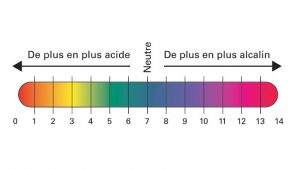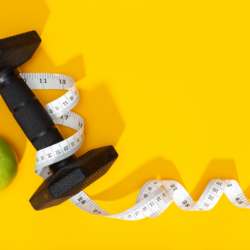How to gauge the balance between degrees of acidity and alkalinity when health is an unstable balance that must be constantly regained?
Our balance is destabilized in many ways: between activity and rest, between the body’s needs and the foods actually consumed, between the production and elimination of toxins … but also in the subtle balance between the bases and the acids present in our body.
Every fiber in the human body therefore responds to this balance between acidity and alkalinity. However, the body can only tolerate very small variations in acidity levels. This degree is measured in pH (Hydrogen Potential), using pH paper. Note that 6.9 is therefore considered acidic and 7.1 as alkaline.
Blood pH:
The blood pH is indeed between 7.3 and 7.4. No life is therefore possible apart from this rate, the slightest variation being able to cause serious disorders, even death. Note, however, that excess acidification is impossible because the pH of the blood is maintained by the body by drawing alkaline substances from other organs, even if it means deficient.
Take the example of calcium, which is an alkaline element. An average intake of 1.2 g (1200 mg) is rather sufficient for an adult. When its level in the blood drops 3% below the ideal threshold, the body will seek calcium where it is sure to find it, for example in the bones, cartilage or teeth.
After a few years of excess acidity, the pulsed minerals will fail in the organs, leading to demineralization, which will cause disorders such as osteoarthritis, osteoporosis or dental caries. To stop demineralization and allow bones and cartilage to regenerate, the acid-base balance must be restored.
Urinary pH:
It is around 5.2. Its acidity is a natural barrier to protect against possible intrusions by microbes, viruses, etc.
The body can be acidified by thought and emotions (negative thoughts, anger, violence, stress …), fatigue, lack of sleep, overwork, lack of activity, poor oxygenation of cells, excess of acidic foods in the diet, insufficient intake of alkaline foods as well as overeating in general.
Acidity overloads:
When we eat meat, proteins are digested to be transformed into uric, phosphoric, sulfuric acid… and their elimination is carried out by the kidneys.
Excessive meat consumption therefore leads to the difficult work of eliminating acids. The resulting excess acidity will be stored in the body in particular in the joints, muscles, tissues, etc.
Examples of symptoms caused by acidity overload:
- Rheumatism and joint and bone disorders
- Canker sores and cracks at the corners of the lips
- Regurgitation and gastric reflux, stomach ulcers
- Stones and skin problems
- ENT disorders (sinusitis, bronchitis, ear infections, etc.)
- Headache
- Burning sensation and anal itching
- Muscle cramps
- Less effective immune system
- Chronic fatigue
- Chilliness
- Depression, nervousness, irritability
- Heavy limb syndrome
- etc.
Some tips to rebalance the acid-base balance:
- Reduce acidifying foods
- Increase alkaline products
- Favor raw foods (to absorb a maximum of vitamins and minerals, which are destroyed during cooking)
- Consume foods in the right order (we will go from the most nutritious to the least nutritious, starting with raw vegetables, then cooked and starchy foods and finally meat)
- Eat slowly, chew well (this makes food more alkaline)
- Eat meals in peace and / or joy (the healthiest food in the world becomes toxic if eaten reluctantly or without pleasure)
- Do not force yourself (serve small portions and refill yourself rather than wasting or forcing yourself to finish your plate)
- Do not eat upset (it is better to wait to be calmer or to skip the meal)
- Cultivate positive thinking (we have all noticed that annoyances modify transit)
- Get oxygenated to properly absorb nutrients (nature walk, abdominal breathing exercises)
- Practice a physical activity (adapted to his level and his desires)
- Take a naturopathic cure once or several times a year
- Take a course of food supplements:
- Ergybase Nutergia: Deacidifying mineral salt complex contributing to a normal acid-base metabolism
- PH Nat Bionops: 100% natural food supplement to bring an acid-base balance to the body
- PH Basic Biocyte: Food supplement contributing to a normal acid-base metabolism thanks to zinc and helping to stabilize the pH
Examples of food associations strongly discouraged:
- Slow carbohydrates / Animal protein (steak / fries, meat / pasta, meats / mash, rice / meat)
- Dairy products / Bread
- Meats / Dairy products
For children, avoid consuming starchy foods (rice, pasta, potatoes, etc.) with a dairy and / or sweet product for dessert. This causes ENT disorders, such as ear infections for example.
- Acidity is essential for digesting part of the food and combating external aggressions while alkalinity allows good absorption of minerals and avoids inconveniences such as heartburn, acid reflux, etc.
List of acidifying and alkalizing foods:
FRUIT:
- Alkalizing
Pineapple, lemon, clementine, pomegranate, grapefruit, tangerine, banana, fig, pear, apple, grape, hazelnut, cherry, strawberry, peach, tomato, melon, watermelon, dried almond, chestnut
- Acidifying
Orange, apricot, prune, hazelnut, dried walnut, pistachio, candied fruits, currants, blackcurrant, raspberry, tomato
VEGETABLES:
- Alkalizing
Eggplant, broccoli, cardoon, cabbage, mushroom, chicory, cauliflower, chives, cucumber, squash, zucchini, watercress, endive, spinach, green bean, lettuce, lamb’s lettuce, leek, pepper, pumpkin, radish, chestnut, potato , Jerusalem artichoke, avocado, olive, escarole, beetroot, carrot, celeriac, shallot, turnip, parsnip, parsley, peas, dandelion, rutabaga, salsify, salad
- Acidifying
Asparagus, sorrel, leek, rhubarb, artichoke, onion, Brussels sprout
DRIED VEGETABLES / CEREALS:
- Alkalizing
Whole barley, corn
- Acidifying
Broad bean, dry bean, lentil, split pea, oats, whole wheat, white flour, oatmeal, starch, white bread, wholemeal bread, pasta, brown rice, buckwheat, semolina, rye, millet, peanuts, soybeans
DAIRY PRODUCTS :
- Alkalizing
Human milk, skimmed yogurt, well-drained cottage cheese
- Acidifying
Butter, crème fraîche, cow’s milk, cheese (strong cheeses are more acidic than mild ones), curd, kefir
EGGS:
- Alkalizing
Yellow
- Acidifying
White
ANIMAL SUBSTANCES:
- Acidifying
Veal / beef, brains, crustaceans, fish, poultry, cold cuts, meat extract
MISCELLANEOUS:
- Acidifying
Alcohol, cocoa, condiments, spices, pastry, sugar, coffee, tea, honey, vegetable oils (especially peanuts and hardened or refined oils), syrup, jam, wine, lemonades, cola-based drinks
Acidifying foods are foods that will release acidic metabolites during their transformation in the body (digestion, cell use). They are in fact producers of acids. For the most part, however, acidifying foods are the basic nutrients of our nutrition, that is, their consumption cannot be suppressed. The idea will be to limit their quantity, and to combine them with other “alkalizing” foods to reduce the impact of their acidifying effect.






